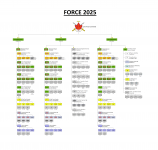FJAG
Army.ca Legend
- Reaction score
- 11,660
- Points
- 1,160
I haven't actually seen a comparison of the cost figures as the LAV upgrade project ended up upgrading more LAVs then IFVs were being purchased. The IFVs would also have added additional vehicles to the fleet as the LAV UP looked to upgrading virtually all of the existing LAV IIIs which, unless I'm off track would have left us with all the Reg F battalions mechanized.Because the LAV 6 upgrade essentially made that entire program redundant. The LAV is an IFV that people seem to ignore because it doesn't have tracks.
In a weird way, GDLS won the competition in the end. They were bidding the Piranha 5 as an option. Nexter was putting up another 8x8 VBCI and The CV90 was bid by BAE. The LAV 6 is basically a Piranha 5. So all of the army's LAV's were converted to one of the bidders. For cheaper than the actual project was going to cost.
I don't dislike the LAV 6.0 at all. I think that it has its purpose and is good at it. OTOH I do not think that a wheeled IFV is as good for intimately integrated work with tanks. The tank and LAV battalion has limited road mobility because of the tanks and limited cross country mobility because of the LAVs. The LAV might perform reasonably on the plains of Shilo and Wainwright but put it into plowed fields in Europe; or hedgerows or the rubble of bombed out buildings or sodden clay fields, and the tanks will quickly leave the LAVs behind them.
Generally I agree though, given the right weapon systems and the right armour and the right engine, you can probably make a wheeled IFV as good as a tracked one. Until you get to traction part where they differ and the wheels win out on a practicable road network and the tracks win out in broken terrain. My personal preference is that with tracked tanks you want tracked IFVs. For a combined arms battalion you really only need four companies of tracked IFVs and a handful of tracked command and support vehicles. My guess is a hundred would probably do. That wouldn't break the bank and would free up enough LAVs to equip the light battalions in the other two brigades.
I also agree that what we have is LAVs, so let's make the best of what we have.


